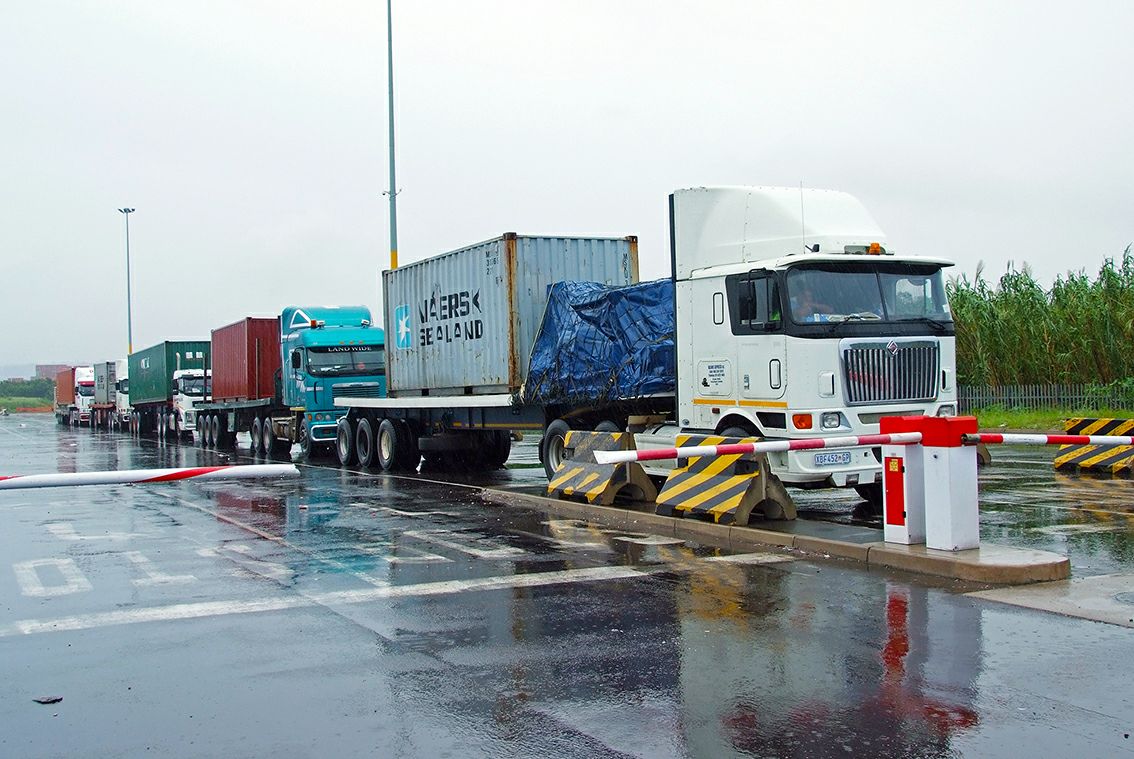
Transnet Port Terminals Durban Pier 1 and 2 have devised a ‘new’ manual system to use for processing imports due to the ongoing Navis system outage. Transnet IT, including the Navis container operating systems have been offline for 3 days now following a cyber attack.
The manual road process for imports may not be new to legends in the industry as it has been in use before the implementation of the Navis.
TPT Durban Pier 1 and 2 provided clients the procedure for shipping lines and transporters to follow when processing import containers.
Abbreviations
CTO – Container Terminal Order
CN1 – Customs Notification 1
RTG – Rubber Tyred Gantry crane
Durban- Pier 2 Import Manual Road Process step-by-step
1. Shipping Lines provides stamped CTO together with Customs CN1 document to Documentation Centre at [email protected] and copy [email protected]
2. KAM’s will provide customized CTO protected template to be used. The template will have the name of the Shipping Line and Vessel name.
3. Terminal Planning/Doc Centre prints 3 copies of CTO’s and CN1 document provided by shipping line and endorses location of stack ID/ITZ zone.
4. Copies of endorsed and stamped CTO is then sent to trouble desk, out gate and ITZ controller/supervisor.
5. Documentation Centre updates container database spreadsheet to keep track of the CTO issued.
6. Truck appointment office calls transporter to give go head to collect container.
7. Transporter arrives with shipping line stamped CTO and CN1 document at terminal and
proceeds to ingate.
8. Security verifies transporter and driver credentials at ingate after which driver proceeds to trouble desk.
9. Trouble desk clerk verifies/matches CTO and CN1 document provided by transporter to CTO and CN1 document provided by shipping line. Once matched, in gate controller stamps transporters copy of CTO.
10. Trouble Desk updates the container data spreadsheet to confirm the list of containers that have departed.
11. Transporter proceeds to ITZ as endorsed on CTO.
12. At ITZ, controller directs transporter to bay in ITZ
13. Controller radios straddle carriers to collect container from yard location
14. Straddle loads container on truck
15. Truck driver must check container number and seal when engaging twist locks
16. Truck proceeds to out gate
17. Out gate clerk physically matches container loaded on truck matches container on CTO and stamps CTO.
18. Security at out gate does independent physical verification and takes photo of side view and rear view of container/vehicle.
19. Documentation Centre and Trouble Desk to update the container database reflecting that container has departed.
20. Final update container database is shared with Finance for billing.
Durban- Pier 1 Import Manual Road Process step-by-step
1. Terminal Planning provides shipping line with list of containers available for collection, by block, dwell, tier etc.
2. Shipping Lines provides stamped CTO together with Customs CN1 document to Documentation Centre [email protected] and copy [email protected]
3. KAM’s will provide customized CTO protected template to be used. The template will have the name of the Shipping Line and Vessel name.
4. Terminal Planning/Doc Centre prints 3 copies of CTO’s and CN1 document provided by shipping line and endorses location of yard block/row.
5. Copies of endorsed and stamped CTO is then sent to trouble desk and out gate.
6. Documentation Centre updates container database spreadsheet to keep track of the CTO issued
7. Truck booking office calls transporter to give go head to collect container.
8. Transporter arrives with shipping line stamped CTO and CN1 document at terminal and commences with TNPA gate security.
9. Security verifies transporter and driver credentials at TNPA gate
10. Transporters proceeds to trouble desk
11. Trouble desk clerk verifies/matches CTO and CN1 document provided by transporter to CTO and CN1 document provided by shipping line.
12. Trouble Desk updates the container data spreadsheet to confirm the list of containers that have departed
13. Transporter proceeds to yard block/row as endorsed on CTO
14. Once transporter arrives at yard block row, supervisor directs RTG operator to load container
15. RTG loads container on truck
16. Truck proceeds to out gate
17. Truck proceeds to the twist lock zone next to the OOG area before exiting the gate and check if the container number is correct and the seal is intact.
18. Out gate clerk physically matches container loaded on truck matches container on CTO and stamps CTO.
19. Security at out gate does independent physical verification and takes photo of side view and rear view of container/vehicle.
20. Documentation Centre and Trouble Desk to update the container database reflecting that container has departed.
21. Final update container database is shared with Finance for billing.
Disclaimer:
The above process is subject to change without notice. TPT will not be held responsible for any incorrect information supplied by the Shipping Lines.
Meanwhile the comapny says it had identified the source of the problem, which the government has referred to as a cyber attack, and was working to minimize the impact. It didn’t disclose details.
Update: Transnet identifies source of IT challenges; priorities time-sensitive export-bound cargo for shipping pic.twitter.com/sMx2VfdPhN
— Transnet SOC Ltd (@follow_transnet) July 23, 2021





